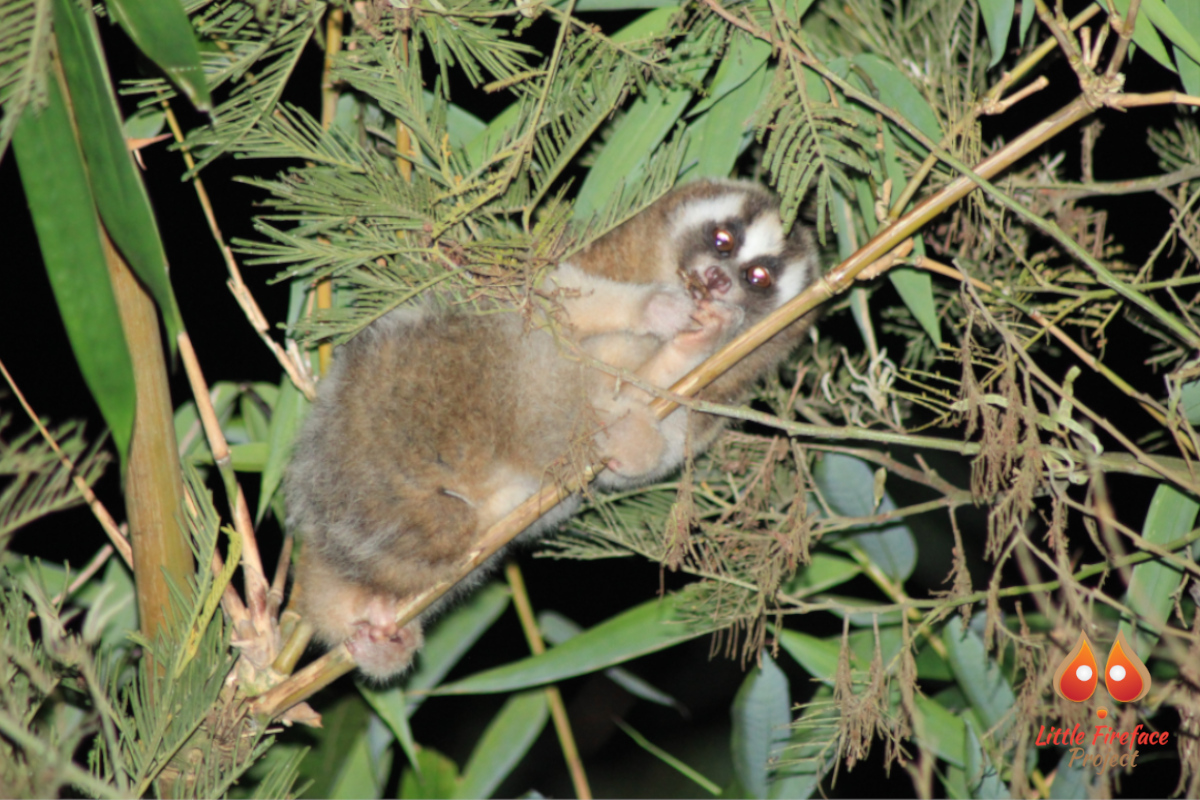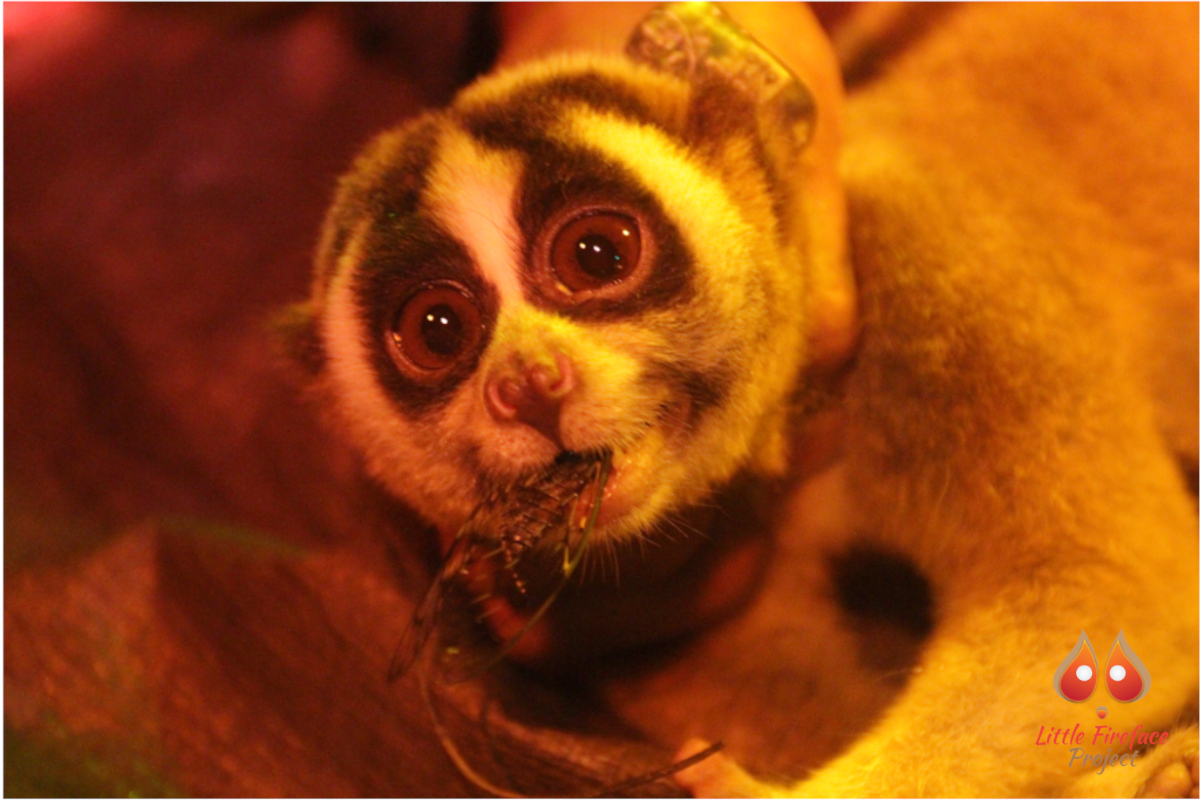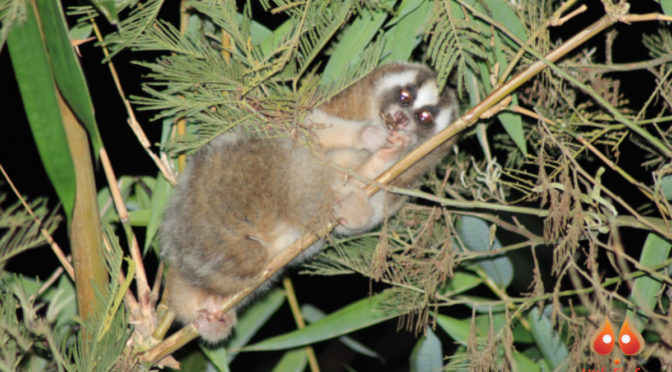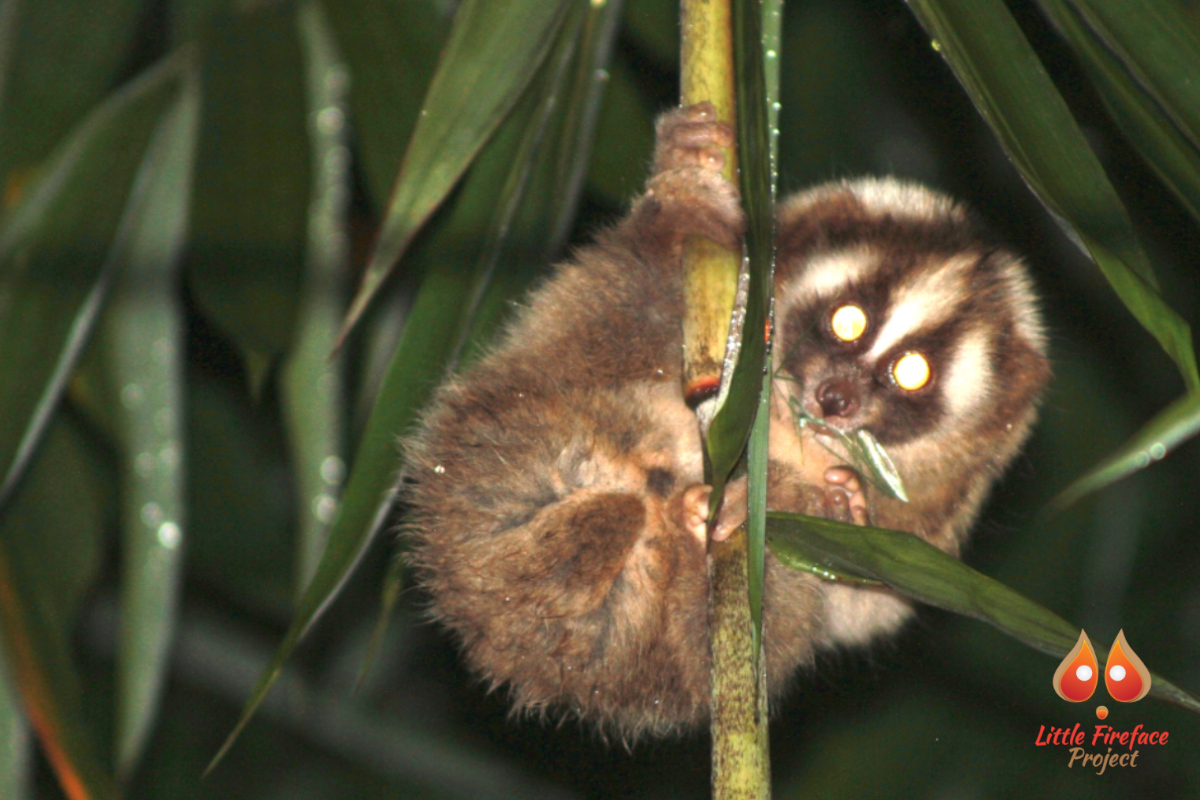Hi there! Since the last time we have already discussed what is gum in forestry term and how that is beneficial to the lorises, this occasion we will talk about the next menu! Can you guess what is another yummy food we will have this week? If you guess insect, you guess right!!
Fluffy, fast, frisky
Although we did not see it as most eat food items, insects take part of Javan slow lorises diet, especially here in the Cipaganti population. Javan slow lorises might look cute and innocent, but behind all those fluffiness there laid an agile hunter who sneaks in the dark looking for prey! They catch insects using their hand, sometimes both for big capture but they also terrific in using only one hand to hunt their prey. They can balance themselves on the vertical and horizontal substrate, even when they are on the vertical platform they still can sneak and grab. Slow lorises hunt insects when they were on the tree and above the ground. Various trees we noted hunt insects, such as Suren, Afrika, Kayu Putih, Bamboo Temen, Alpukat, Kaliandra Merah, Salamandar. On some occasions we also see them eating insects when they were on the sea of labu!

Vision extension
It is quite hard for beginners to spot wild slow lorises eating insects especially when they were on the dense canopy or when they were facing back and hide their doing. But no worries because every night we are always equipped with our vision extension, binoculars. It takes time and practice in balancing our hands and direction to find the spotted lorises. Especially when we hold binoculars in one hand and hand torch in the other hand, it gets confusing! Another occasion where we can see wild lorises feed on insects is when they were on the loose canopy especially when they were in a feeding frenzy!
How is a slow loris is a helper?
Slow lorises fed on various insect species, but among them are from family Lepidoptera, Orthoptera, and Dictyoptera. Those families are family of caterpillars, grasshoppers and cockroaches which often consider as a pest by the farmers. In line with the Wildlife Friendly certification, one of our tricks for dealing with pests is by using the yellow laminated paper covered with glue and hormone so that it attracts the pests. But not only that, but we also have lots of help of course from the lorises!

Insects that are good for lorises in captivity
A sad situation when we saw lorises that live without complete teeth, in most cases they can’t be released in the wild because teeth are holding an important role in self-protection and gum feeding. Therefore, providing balance and the right diet especially what they like, is very important to the lorises who will spend their days in captivity. Thank many great researchers that observed lorises in the wild so that we can mimic the diet thus we can bring a piece of home vibes to them. We have recommendations of insects that can be fed to the lorises daily such as crickets and locusts. You can find other informatic resources of lorises here, such as 6 steps to save lorises available in English and Bahasa Indonesia. Take it home and share it with your friends!


